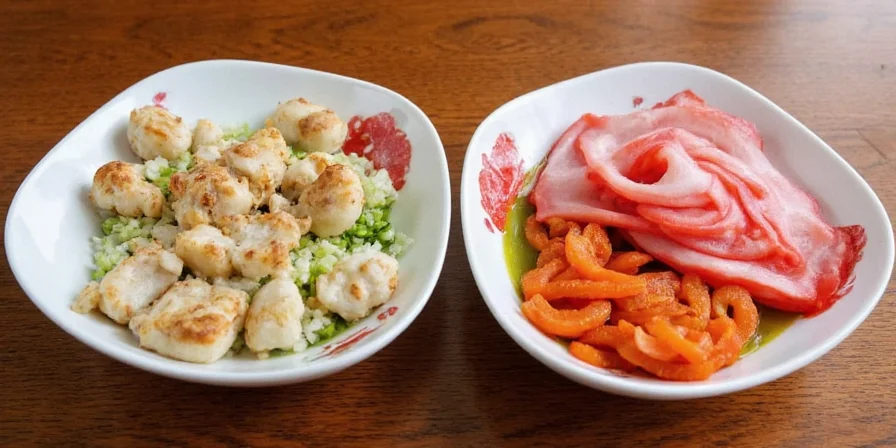Table of Contents
- The Critical Difference You Need to Know
- Ceylon Cinnamon: Health Benefits and Best Uses
- Cassia Cinnamon: When It's Safe and When to Avoid
- Direct Comparison: Flavor, Safety, and Practical Applications
- 5 Science-Backed Usage Recommendations
- Coumarin Levels: Exact Safe Dosages by Body Weight
- Ethical Sourcing Considerations
- Frequently Asked Questions Answered
The Critical Difference You Need to Know
When choosing between Ceylon and Cassia cinnamon, the most important factor is coumarin content. Ceylon cinnamon contains only 0.017-0.1 mg of coumarin per gram, while Cassia contains 2.1-5.8 mg per gram - making Cassia up to 340 times higher in this liver-toxic compound. For regular consumption (more than 1-2 times weekly), Ceylon is significantly safer.
Ceylon Cinnamon: Health Benefits and Best Uses
Ceylon cinnamon (Cinnamomum verum), often called "true cinnamon," originates from Sri Lanka and offers distinct advantages for regular consumption. Its delicate, citrus-forward flavor profile comes with minimal coumarin content, making it the preferred choice for daily use.
Key Advantages of Ceylon:
- Coumarin content: 0.017-0.1 mg per gram (EFSA considers <0.1 mg/kg body weight daily safe)
- Ideal for daily consumption in coffee, oatmeal, or smoothies
- Better suited for individuals managing blood sugar levels long-term
- Thinner, multi-layered bark structure (appears as tightly rolled quills)
- More expensive ($20-30 per ounce vs. Cassia's $5-10)

Cassia Cinnamon: When It's Safe and When to Avoid
Cassia cinnamon dominates 90% of the U.S. market due to its bold, spicy flavor and lower price point. While perfectly safe for occasional use, its high coumarin content requires careful portion control for regular consumption.
Critical Safety Information:
- Coumarin content: 2.1-5.8 mg per gram (nearly 100% of EFSA's safe daily limit in just 1 teaspoon)
- Maximum safe daily intake: 0.5-1 gram (about 1/4 to 1/2 teaspoon) for most adults
- Preferred for strong-flavored applications like pumpkin spice or chai blends
- Darker, single-layer bark that's harder to break
- Accounts for 95% of cinnamon sold in supermarkets
Direct Comparison: Flavor, Safety, and Practical Applications
This detailed comparison helps you choose the right cinnamon for specific culinary and health needs based on verified data.
| Characteristic | Ceylon Cinnamon | Cassia Cinnamon |
|---|---|---|
| Coumarin Content | 0.017-0.1 mg/g | 2.1-5.8 mg/g |
| Maximum Daily Intake (150lb adult) | Unlimited for culinary use | 0.5-1 gram (1/4-1/2 tsp) |
| Flavor Profile | Mild, sweet, citrus notes | Strong, spicy, pungent |
| Visual Identification | Multiple thin layers, soft texture | Single thick layer, hard texture |
| Price (per ounce) | $20-30 | $5-10 |
| Best Culinary Uses | Desserts, beverages, daily consumption | Baking, spice blends, occasional use |
5 Science-Backed Usage Recommendations
- For daily consumption (smoothies, coffee): Use Ceylon exclusively - Cassia exceeds safe coumarin limits in just 1 teaspoon
- For baking (cookies, pies): Cassia provides stronger flavor, but limit to 1 teaspoon per recipe
- For blood sugar management: Choose Ceylon for consistent daily use; both show similar benefits but Ceylon has superior safety profile
- When buying powder: Look for "Ceylon" or "True Cinnamon" on label - visual identification is impossible with ground product
- Storage tip: Keep whole sticks in airtight container away from light - retains potency 3x longer than pre-ground

Coumarin Levels: Exact Safe Dosages by Body Weight
The European Food Safety Authority (EFSA) establishes a tolerable daily intake (TDI) of 0.1 mg coumarin per kilogram of body weight. Here's how that translates to practical measurements:
- 130 lb (59 kg) person: Max 5.9 mg coumarin daily = 1.0-2.8 grams Cassia (1/4-1/2 tsp)
- 150 lb (68 kg) person: Max 6.8 mg coumarin daily = 1.2-3.2 grams Cassia (slightly less than 1/2 tsp)
- 180 lb (82 kg) person: Max 8.2 mg coumarin daily = 1.4-3.9 grams Cassia (about 1/2 tsp)
Ceylon cinnamon users can safely consume 10-20 times these amounts without coumarin concerns. For therapeutic applications or medical conditions, consult your healthcare provider before using cinnamon medicinally.
Ethical Sourcing Considerations
Ceylon production in Sri Lanka typically supports smallholder farming communities using sustainable agroforestry practices. Look for Fair Trade certification to ensure ethical labor practices. Cassia harvesting, while economically important in China and Indonesia, sometimes involves less sustainable practices. Both supply chains have improved with increasing demand for transparency - choose brands that disclose their sourcing practices.
Frequently Asked Questions Answered
How can I tell Ceylon and Cassia apart in stores?
Check the label for "Ceylon" or "True Cinnamon." Visually, Ceylon forms multiple thin layers (like rolled paper), while Cassia has a single thick, hard tube. Powdered versions require brand research as visual identification is impossible.
Is Cassia cinnamon dangerous?
Cassia is safe for occasional use (1-2 times weekly). The risk comes from daily consumption exceeding 0.5-1 gram. One teaspoon of Cassia contains nearly 100% of the EFSA's safe daily coumarin limit for most adults.
Does cinnamon lower blood sugar?
Multiple studies show both types may improve insulin sensitivity, with effects typically seen at 1-6 grams daily. However, Ceylon is preferred for consistent use due to its safety profile. Never replace prescribed diabetes medication with cinnamon.
Which cinnamon is better for weight loss?
Neither cinnamon type directly causes weight loss, but both may support metabolic health. For regular inclusion in weight management routines, Ceylon is safer due to its minimal coumarin content allowing for consistent daily use.
Your Cinnamon Decision Made Simple
Choose Ceylon cinnamon for daily consumption, health-focused applications, and delicate dishes. Reserve Cassia for occasional baking when its stronger flavor is desired, but strictly limit portions to 1/4-1/2 teaspoon per serving. Always verify the type when purchasing, as most supermarket cinnamon is Cassia mislabeled as simply "cinnamon." Your liver (and taste buds) will thank you.











 浙公网安备
33010002000092号
浙公网安备
33010002000092号 浙B2-20120091-4
浙B2-20120091-4